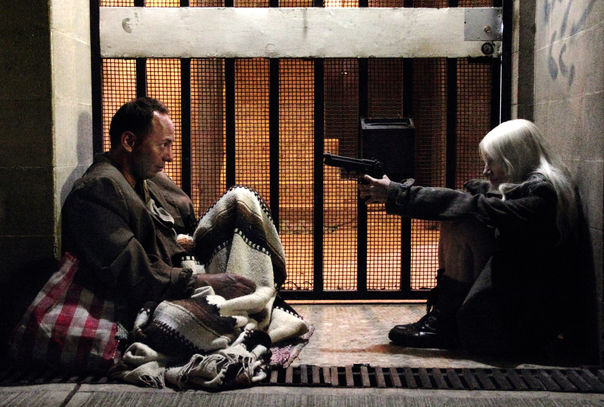VERÓNICA and ANADINA: Won't You Buy Me a Marzipan?
By Davo Valdés de la Campa

Still from ANADINA by The Visualistas
One of the maxims in stories is that a tale contains a secret narrative. For Ricardo Piglia, the structure of a story “is constructed to artificially reveal something that was hidden.” This means that every tale contains two parallel stories, one visible and one invisible. According to Piglia: “Working with two stories means working with two different systems of causality. The same events enter simultaneously into two antagonistic narratives. The essential elements of the story have a dual function and are used differently in each of the two stories. Crossing points are the foundation of construction.” In short, what is most important is never told. The secret story is built with what is not said, through what is implicit and alluded to.
One of the great story masters in the world, Borges, used stereotypes and genre structures - the thriller, the police story, etc. - to tell a visible tale while the ciphered story parodied or twisted these genres to lead them into a new dimension. In this sense, horror cinema resides in a tradition that survives using genre rules and exploitation of the commonplace, but through the mastery of certain filmmakers these commonplaces appear to us as if seen for the first time because they surprise us, because they transcend the foreseeable and superficial, and because - deep down - the monster, the murderer, and the viral threat are metaphors for something hidden.
Simple lessons in story theory are fundamentals that seem to be non-existent in productions such as VERÓNICA – a film directed by a collective that calls itself The Visualistas – and ANADINA by Raúl Fuentes, both Mexican movies that use the horror and science fiction genre respectively to tell two predictable, superficial, and over-explained stories. This is perhaps due to a lack of humility towards spectators or because they are unaware of how to use structures that require specific rules, rules that must be mastered before they can be broken. Not only do they fail to break clichés; they reproduce them through the implausible without respect for the very rules they set in their own stories. The former is a typical patient-therapist story that is reversed in an absurd plot twist; the latter, a story about a time traveller who returns to the past to try to fix a catastrophe.
Herta Müller, in her Nobel Literature speech, advised young writers to tackle what they know (their family, their town, their relations), especially when they begin their process. This, according to her, would help exercise the creation of a story and to tell things honestly. If one still does not have a clear idea, as is the case with both stories, it is impossible to find a correct way to tell it. What is a fact is that the secret story, what drives the plot, cannot be explicitly over-explained by the characters in their dialogues because any attempt at surprising then becomes a disaster and every time this happens we feel cheated as spectators.

